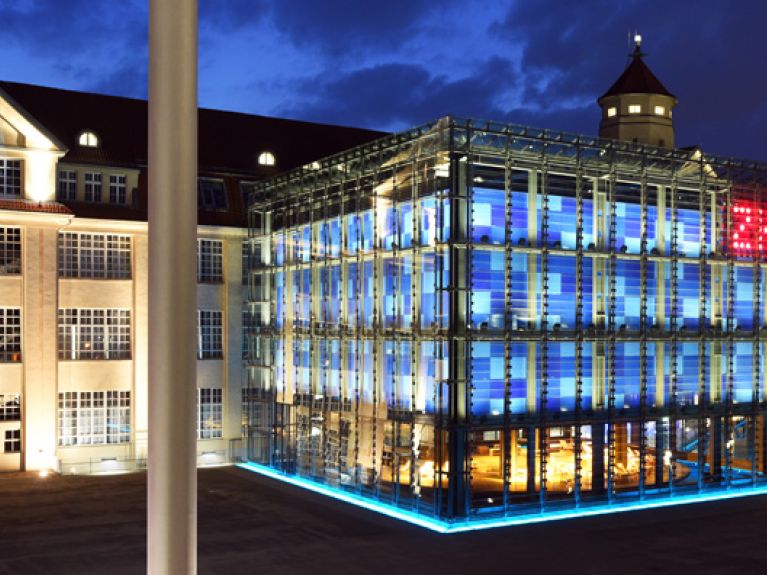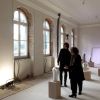The digital Bauhaus
The Centre for Art and Media (ZKM) in Karlsruhe has been leading the classical arts into the digital age for 25 years.

Where ammunition was once produced for weapons, society is today being armed for the future.” These were the words Frank Mentrup, the Mayor of Karlsruhe, once used to sum up the history of the Center for Art and Media (ZKM). This globally unique cultural institution covers all media and genres, both analogue and digital, and offers a home not only for spatial arts like painting, photography and sculpture, but also for time-based media such as film, video, media art, music, dance, theatre and performance. To date, more than four million visitors have shared the ZKM’s visions in Karlsruhe in about 300 exhibitions and performances.
From the outset, the key question was how are art and society changing as a result of the emerging new information and communication media? At an early stage, Heinrich Klotz, the founding director, gave the centre the honorary title of “digital Bauhaus” – a reference to the Bauhaus, the art school that was founded in Weimar in 1919 and later moved to Dessau. The Bauhaus realigned the arts from the craft perspective to the machine perspective for the first time. By contrast, the ZKM – in line with the technological possibilities of the 21th century – uses digital technologies to present the arts, without falling into blind media euphoria in the process. It houses institutes and laboratories where research and development are conducted. It not only preserves art in archives and collections in the classical museum tradition, but actively helps in the production of art.
In 1985 the MIT Media Lab was launched in Massachusetts as a think tank for the new digital age. However, a year earlier the then head of the Karlsruhe City Culture Department, Michael Heck, had already put forward an initial proposal for setting up an “interdisciplinary centre for research, teaching and artistic activities”, which was then implemented in 1989. In the early days, the ZKM was spread over several sites in Karlsruhe, but in the autumn of 1997 the new haven for the media arts found its final home in the historic warehouse of a former industrial engineering company. In the 1920s this factory had initially manufactured civilian utensils like tins and milk cans, but the focus switched a few years later to the large-scale production of ammunition and weapons components. The Austrian artist and media theorist Peter Weibel, who followed Klotz as director in 1999, explains that the ZKM has successfully driven the evil spirit out of these walls in two ways: “First, by the transformation of a war factory into a culture factory and, secondly, by turning implements of war into works of media art.” For example, the Hungarian artist Kata Legrady recently decorated Kalashnikov rifles with Smarties, simply smiling away the former killing machines.
Its geographical location at the intersection of major transport links, its close proximity to France and its numerous collaborations with European partners, such as the Steirischer Herbst festival in Graz, the Media Center d’Art i Disseny in Barcelona or the IRCAM in Paris, all make the ZKM an ideas hub for all parts of Europe. But here, too, the motto now is: “Think global, act local!” A four-million-euro exhibition entitled Globale is to open in June 2015 depicting the cultural effects of globalisation and the mutual influences and challenges of different concepts of culture. The ZKM need not worry about its long-term viability in the context of such ambitious programmes. For, to quote what Adam G. Riess, 2011 Nobel Laureate for Physics, said in a video message called “On the Future of the Universe” marking the ZKM’s 25th anniversary: “Don’t panic – the ZKM has another 35 billion years ahead of it yet.” ▪

